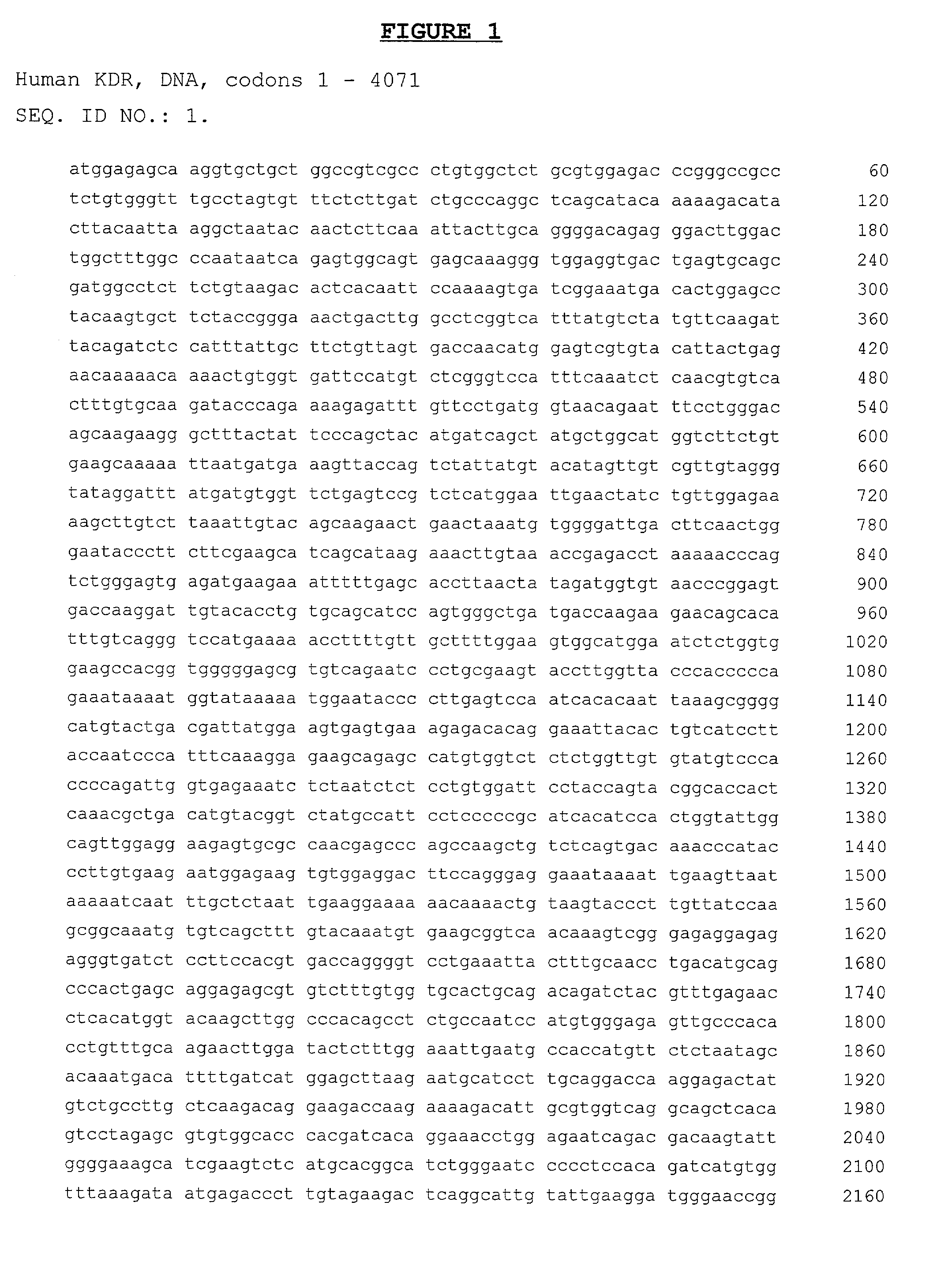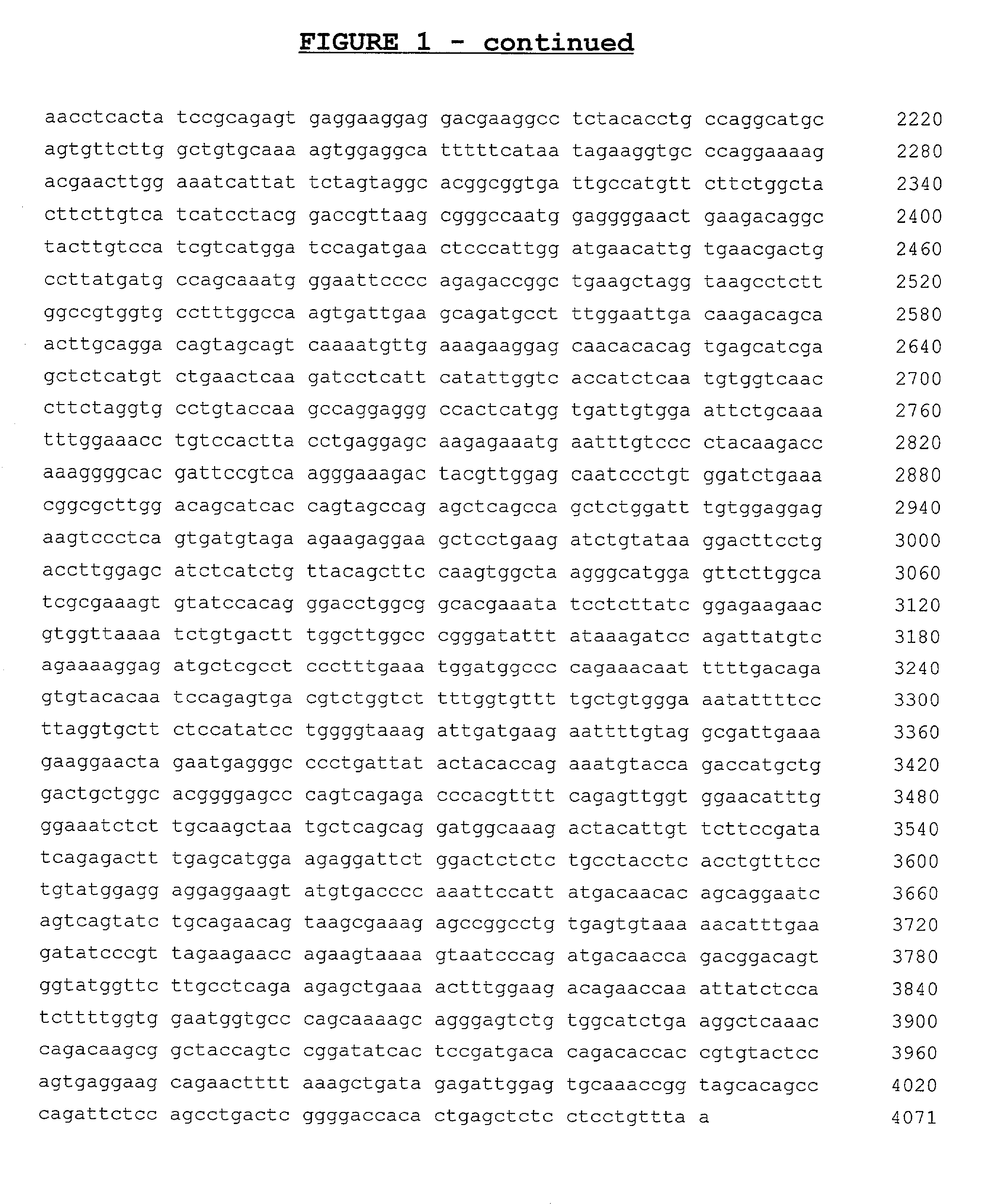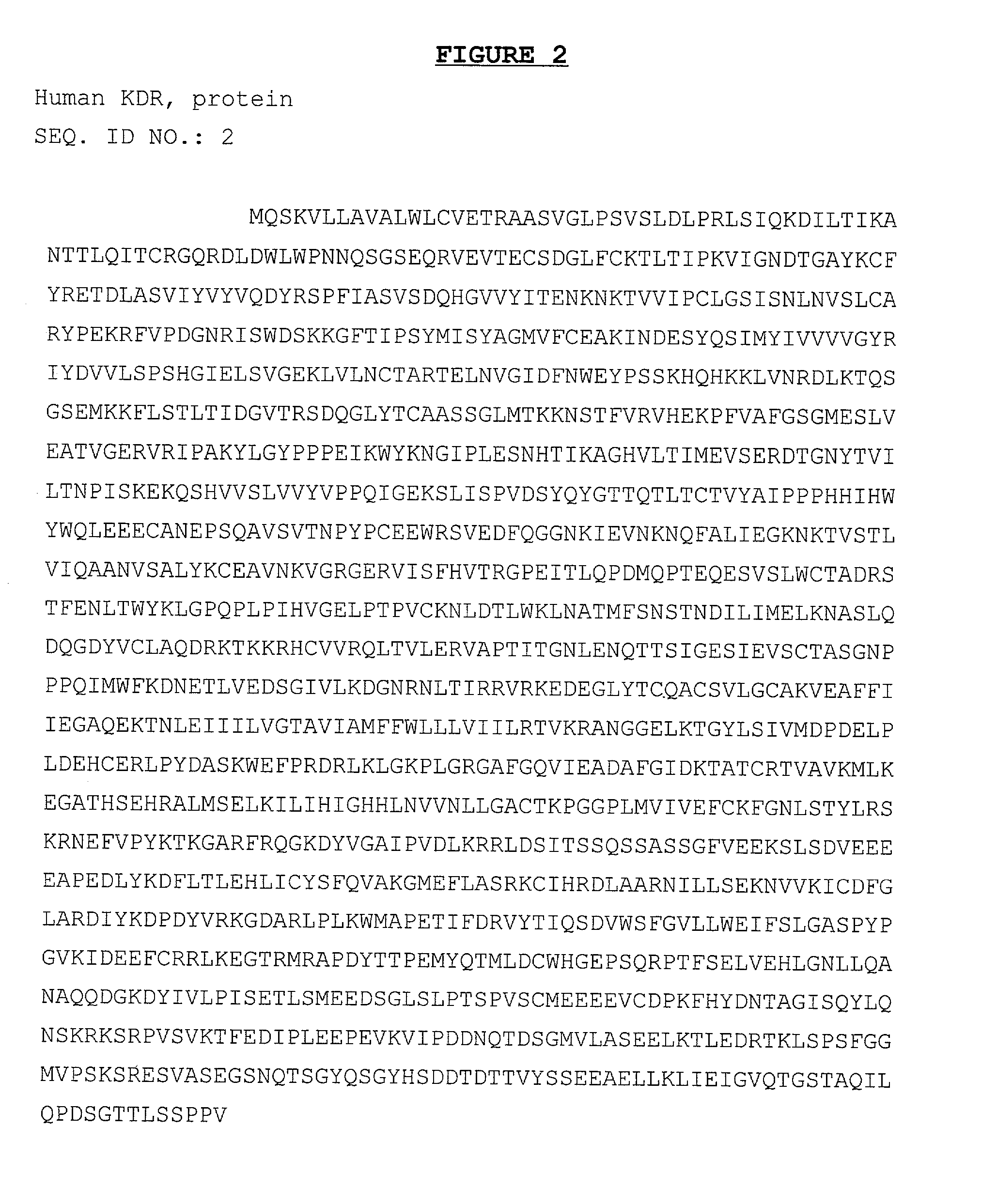DNA vaccine against proliferating endothelial cells and methods of use thereof
a technology of endothelial cells and dna vaccine, which is applied in the direction of biocide, drug composition, antibody medical ingredients, etc., can solve the problems of resumption of tumor growth, inability to readily culture and inactivate all infectious agents, and the need for relatively continuous administration of angiogenesis inhibitors, so as to prevent tumor vascularization
- Summary
- Abstract
- Description
- Claims
- Application Information
AI Technical Summary
Benefits of technology
Problems solved by technology
Method used
Image
Examples
example 1
Preparation of a DNA Vaccine Encoding Flk-1
[0069]The pcDNA3.1 vector containing Flk-1 DNA (SEQ ID NO: 5; about 10 μg to about 0.1 μg of pDNA) was electroporated into freshly prepared attenuated Salmonella typhimurium, utilizing a Bio-Rad Pulser at 2.5 kV, 25 μF, and 200 Ohm according to the manufacturer's recommended procedures. Salmonella containing the vector were selected on ampicillin-containing plates. Colonies were picked the next day and cultured overnight in LB broth (EM Science, Gibbstown, N.J.) with ampicillin added. The bacteria were isolated and washed in phosphate buffered saline (PBS). The washed bacteria were then suspended in PBS medium at a concentration of about 1×109 recombinant Salmonella per milliliter of PBS, to form a vaccine solution for later use. The vaccine was stored in sealed ampules until used. A “control vaccine” consisting of Salmonella transformed with the pcDNA3.1 vector alone (no Flk-1 DNA) was also prepared according to the same procedure. The pla...
example 2
Vaccination of Mice with a DNA Vaccine Encoding Flk-1
[0070]Balb / C mice (about 6 mice per treatment group) were vaccinated with the DNA vaccine of Example 1 (about 1×108 recombinant Salmonella in about 100 μl of PBS) by oral gavage, three times at two week intervals. Another group of mice were vaccinated with control vaccine (consisting of attenuated Salmonella containing the empty vector) according to the same schedule as the mice vaccinated with the inventive vaccine.
example 3
Evaluation of Tumor Resistance of Vaccinated Mice
[0071]About two weeks after the third vaccination, Balb / C mice from Example 2 (about 6 mice per treatment group) were challenged with either about 1×105 B16 melanoma cells (subcutaneously), about 1×105 D121 Lewis lung carcinoma cells (subcutaneously), or about 7.5×104 CT26 colon carcinoma cells (intravenously). The subcutaneous Lewis lung tumors were surgically removed after about two weeks of growth to allow spontaneous dissemination to the lung. Subcutaneous tumor growth was measured in two dimensions every other day, and tumor volume was calculated according to the formula:
volume=(width2)(length÷2)
for each tumor. The amount of spontaneous metastasis of D121 to the lungs was evaluated about 30 days after removal of the subcutaneous primary tumor. The mice were sacrificed and necropsied, and the tumor burdens of the lungs were evaluated according to the percentage of the lung surface that was covered by tumor and scored as “0” for no...
PUM
| Property | Measurement | Unit |
|---|---|---|
| Volume | aaaaa | aaaaa |
| Volume | aaaaa | aaaaa |
| Volume | aaaaa | aaaaa |
Abstract
Description
Claims
Application Information
 Login to View More
Login to View More - R&D
- Intellectual Property
- Life Sciences
- Materials
- Tech Scout
- Unparalleled Data Quality
- Higher Quality Content
- 60% Fewer Hallucinations
Browse by: Latest US Patents, China's latest patents, Technical Efficacy Thesaurus, Application Domain, Technology Topic, Popular Technical Reports.
© 2025 PatSnap. All rights reserved.Legal|Privacy policy|Modern Slavery Act Transparency Statement|Sitemap|About US| Contact US: help@patsnap.com



